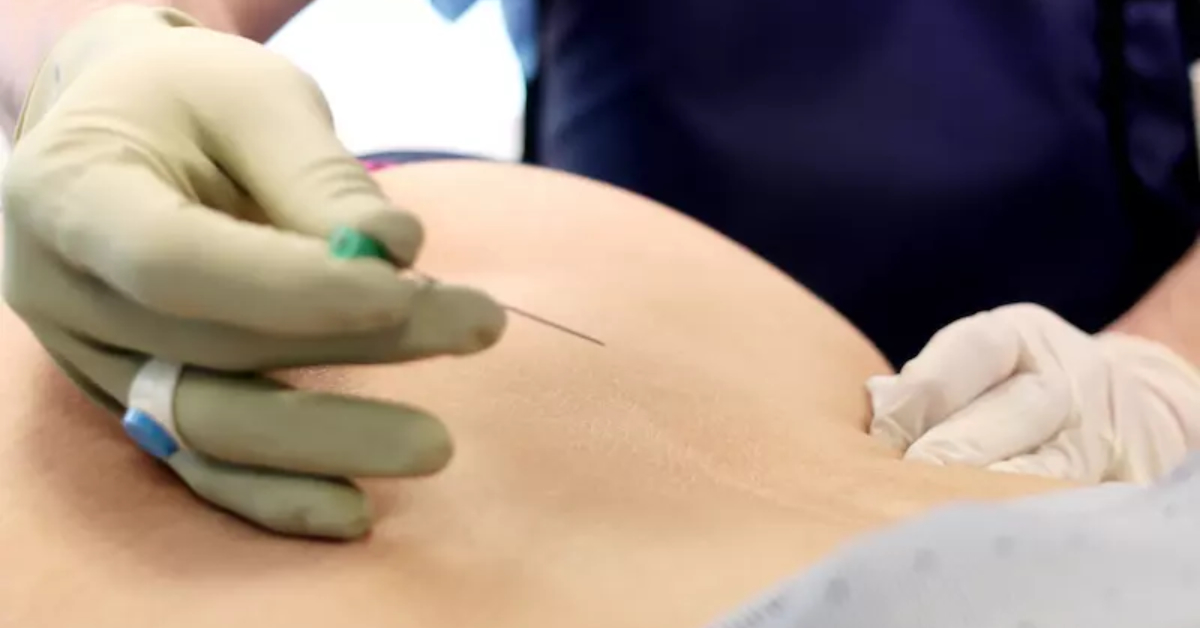
Disc prolapse? Endoscopic surgery could be a solution
In most cases, chronic low back pain is caused by a prolapsed disc, which compresses the spinal nerve root and is also a common reason for surgery. Minimally invasive and endoscopic spinal procedures can provide effective solutions. They are conducted under precise video guidance, without the need for hospitalisation, and treat the damaged disc in as little as 90 minutes.
Intervertebral disc protrusion (herniation, prolapse) is determined by a specialist by evaluating the results of an MRI or CT scan. However, the symptoms of a prolapse can be observed by the patient themselves, especially if the pain is chronic, long-lasting (more than three months) and no treatment, rehabilitation or exercise helps. It is manifested by a dull, stabbing or burning pain in the lumbar region, which very often radiates to the lower limb. Typical symptoms include stiffness, muscle spasms, numbness of the leg in various places (toes), often the limb is immobile. These signals can be a manifestation of radicular syndrome and are definitely a reason to see a specialist.
Interventional pain treatment
The patient first undergoes a preliminary examination and precise interventional diagnosis of the back, where the presumed source (generator) of pain is confirmed or ruled out by means of diagnostic procedures. The physician then determines a treatment plan with the optimal therapy. The diagnostic procedure is often enough to relieve pain. If the effect is not sufficient, further interventions are performed, ending with advanced endoscopic disc surgery.
What does the endoscopic procedure involve?
Unlike conventional surgery, endoscopic surgery does not require an open approach. The surgeon introduces the surgical instruments into the spinal space through an entry hole of approximately 8 to 10 mm, and the procedure itself takes place under an endoscopic camera that displays the surgical space on a monitor. The protruding part of the disc is removed with special forceps and then the disc is treated with thermal radiofrequency to prevent recurring prolapse. The epidural (spinal) space can also be “explored” using a special mini camera inserted through the sacrum. If there are other pathological changes that could cause pain, they can be removed directly. This mainly involves the disruption of adhesions - residual ligaments that can press on the spinal root - or the removal of disc fragments. Anti-inflammatory medication may also be administered. The procedure takes no more than 90 minutes and is performed under local anaesthesia (analgosedation). After about two hours of bed rest, the patient returns home.
Is endoscopic surgery always successful?
Minimally invasive methods of interventional treatment are based on the scientifically proven procedures of evidence-based medicine (EBM) and follow the recommendations of the international organisations SIS (Spine Interventional Society) and WIP (World Institute of Pain). As with any treatment method, it is important to remember that this type of interventional treatment may not be appropriate for every patient, and as with other surgeries and diagnoses, the pain may not be relieved completely or to the degree the patient would expect. Each patient also perceives the intensity of their pain differently.
Yet the benefits of minimally invasive and endoscopic procedures are demonstrable - apart from a number of clinical benefits, such as the lower risk of damage to muscular and skeletal structures, less bleeding, reduced formation of ligamentous adhesions after surgery or the occurrence of infections, these benefits include noticeably faster recovery and return to everyday activities, which are crucial factors for people struggling with long-term pain. The patient usually returns to normal activity 6 weeks after the procedure.
Therefore, as with any diagnosis, and even more so with the back and spine: the sooner we seek professional help, the sooner we can prevent problems and pain later on, e.g., during recurrence. Are you interested in the possibility of solving your back pain with endoscopic procedures? Would you like to know whether it might be suitable for you?